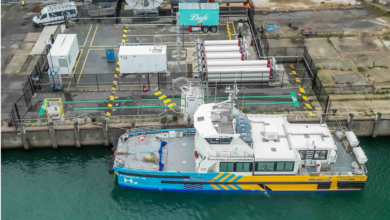Hypersonix and Boeing to develop hydrogen-powered hypersonic spacecraft
The hydrogen-powered scramjet will be low cost and reusable delivering small satellites to LEO.

Hypersonix Launch Systems, an Australian aerospace design and development start-up company, has agreed with Boeing to conduct a joint study on designing hydrogen-powered hypersonic spacecraft.
The spacecraft would work as a reusable shuttle to deliver satellites to Low Earth Orbit (LEO), using Hypersonix Spartan scramjet engines. Spartan is a Hypersonix fifth-generation green hydrogen-powered scramjet engine, a fully composite reusable accelerating scramjet engine capable of Mach 12. Spartan is made from ceramic matrix composites (CMCs), a subgroup of composite materials and ceramics, consisting of ceramic fibres embedded in a ceramic matrix.
Boeing has been in the hypersonic flight business for over 60 years and flown experimental and operational hypersonic vehicles such as the X-15, Space Shuttle, X-43A, X-51A, X-37 and Hifire-4.
Dr Michael Smart, Head of R&D and Co-Founder of Hypersonix said: “We ‘fly to space’, is fully reusable, and we use green hydrogen to provide a high cadence and flexible LEO launch service.”
Last year, Hypersonix received an Accelerating Commercialisation Grant from the Federal Department of Industry. Hypersonix is also working with BOC on the supply of green hydrogen as a fuel for the Spartan scramjet.
Hypersonix said that there are some severe environmental impacts from rocket launches. Presently, the most common fuels used in rockets today are hydrogen, methane, solid rocket fuel, hypergolic fuel, and RP-1 (highly refined kerosene). These fuels produce by-products such as carbon dioxide, water, carbon (soot), nitrous oxides, chlorine and sulfuric acid. Many of these are hazardous and can cause smog and other environmental effects such as acid rain.
To resolve the issue, Hypersonix has also developed hydrogen-fuelled scramjet technology known as Delta-Velos. Where rockets directly dump by-products into the different layers of Earth’s atmosphere, Delta-Velos uses only Hydrogen fuel and so only produces water vapour as its by-product.
